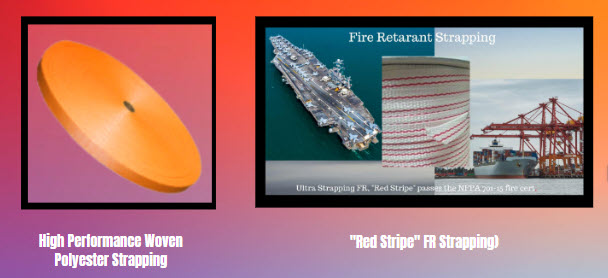Enkamat 7020: A High-Performance TRM for Slopes, Channels & Vegetation
A 3-dimensional turf reinforcement mat (TRM) is an advanced erosion control solution designed to stabilize soil, support vegetation growth, and withstand high-stress environments. Unlike traditional erosion control blankets, TRMs provide long-term reinforcement by integrating vegetation into a strong, synthetic structure that prevents soil loss and slope degradation.
Understanding Enkamat® 7020
One of the most effective TRMs on the market is Enkamat® 7020, a high-performance root reinforcement mat (R2M). Made from continuous nylon monofilaments fused at intersections, Enkamat 7020 is 95% open, allowing for maximum soil, mulch, and root interaction. This open structure helps vegetation establish deep root systems, making it an ideal choice for erosion-prone areas.
Unlike other TRMs, which may become buoyant in submerged conditions, Enkamat 7020 is manufactured from nylon, ensuring stability even when fully submerged in water. This makes it an excellent solution for vegetated channels, slopes, and high-shear stress environments.
Who Uses Turf Reinforcement Mats Like Enkamat 7020?
1. Civil Engineers & Construction Professionals
TRMs are widely used in infrastructure projects where erosion control is critical. Engineers rely on Enkamat 7020 to stabilize soil in:
- Roadside embankments
- Highways and bridges
- Stormwater channels
- Coastal and riverbank restoration projects
2. Landscape Architects & Environmental Specialists
Landscaping professionals and environmental restoration experts incorporate TRMs to support sustainable vegetation growth in challenging terrains. These mats:
- Protect wetlands and natural habitats
- Enhance plant ecosystem performance
- Improve soil retention on slopes
3. Municipalities & Government Agencies
Government agencies, including the Federal Highway Administration (FHWA), utilize TRMs to meet erosion control regulations. Enkamat 7020 meets FHWA FP-03 Type 5C TRM specifications, making it a trusted choice for public projects.
4. Contractors & Developers
Contractors working on commercial or residential developments benefit from TRMs in:
- Stormwater management systems
- Retention ponds
- Golf courses and sports fields
- Newly graded construction sites to prevent erosion before landscaping is established.
Who Should Use Enkamat 7020?
If you are dealing with soil erosion, unstable slopes, or high-shear flow environments, you should consider using a turf reinforcement mat like Enkamat 7020.
✔ Contractors needing long-term erosion control solutions
✔ Property owners with steep slopes or drainage issues
✔ Municipalities requiring compliance with FHWA erosion control regulations
✔ Environmentalists working on habitat restoration
✔ Engineers designing stormwater channels and embankments
Key Applications for Enkamat 7020
1. Permanent Erosion Control for Vegetated Channels
Enkamat 7020 is designed for channels and drainage areas with shear stresses of up to 17 psf, where water flow can erode unprotected soil. By reinforcing vegetation, this TRM prevents washouts and ensures long-term stability in high-flow conditions.
Ideal Uses:
- Stormwater drainage systems
- Roadside ditches and swales
- Flood control channels
- Riverbanks and shorelines
2. Slope Stabilization & Landslide Prevention
For moderate to steep slopes (up to 0.5H:1V), Enkamat 7020 provides structural support to prevent landslides and soil movement. The open structure anchors plant roots deep into the soil, ensuring vegetative reinforcement in areas prone to erosion.
Where It Helps:
- Hillsides & embankments
- Residential or commercial developments on sloped land
- Landfill caps and levees
- Mining reclamation sites
3. Support for Ecosystem & Vegetative Growth
Since Enkamat 7020 provides 95% open space for root penetration, it supports plant ecosystems in sensitive areas where vegetation alone is not strong enough to prevent erosion.
Best Applications:
- Wetlands and natural habitat restoration
- Green infrastructure projects
- Urban landscaping in flood-prone areas
4. Mulch & Hydroseeding Enhancement
Hydraulically applied mulches (hydroseeding) are commonly used for fast vegetation establishment. However, in high-stress environments, hydroseeding alone may not be enough. Enkamat 7020 reinforces these applications, allowing vegetation to root securely and resist washouts.
Ideal Uses:
- Steep slopes prone to runoff
- Highway median restoration
- Stormwater retention basins
Can DIYers Use Turf Reinforcement Mats Like Enkamat 7020?
For large-scale projects, TRMs are typically installed by contractors, engineers, or municipalities. However, homeowners and DIY enthusiasts can use TRMs for smaller residential projects that require erosion control.
DIY Applications for Homeowners
✅ Preventing backyard erosion on steep slopes
✅ Stabilizing drainage areas around homes
✅ Creating reinforced grass pathways or driveways
✅ Enhancing landscaping with better root reinforcement
How to Install a TRM in a DIY Setting
- Prepare the Area – Remove debris, level the soil, and ensure proper drainage.
- Lay Down the TRM – Unroll the Enkamat 7020 mat across the slope or drainage area.
- Secure It – Use biodegradable or metal stakes to anchor the mat.
- Apply Mulch or Soil – Fill the open spaces in the mat with topsoil or mulch.
- Plant Vegetation – Either seed manually or use hydroseeding for quick growth.
- Water Regularly – Ensure proper hydration to promote root growth.
Final Thoughts: Why Enkamat 7020 is the Ultimate TRM Solution
If you're looking for a long-term erosion control solution that enhances vegetation growth while stabilizing soil, Enkamat 7020 is a proven choice. Unlike temporary erosion control blankets, this 3D turf reinforcement mat provides permanent soil protection, making it ideal for high-stress water flow areas, steep slopes, and vegetated channels.
✅ Meets FHWA specifications
✅ Resistant to buoyancy in submerged conditions
✅ Supports plant ecosystems with 95% open structure
✅ Perfect for engineers, municipalities, and contractors
✅ DIY-friendly for residential erosion control
Investing in Enkamat 7020 ensures soil stability, reduces maintenance costs, and supports sustainable vegetation for years to come. Whether you're a civil engineer, landscaper, contractor, or homeowner, this innovative TRM is a game-changer in erosion control.














